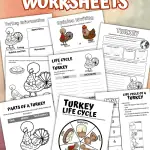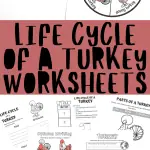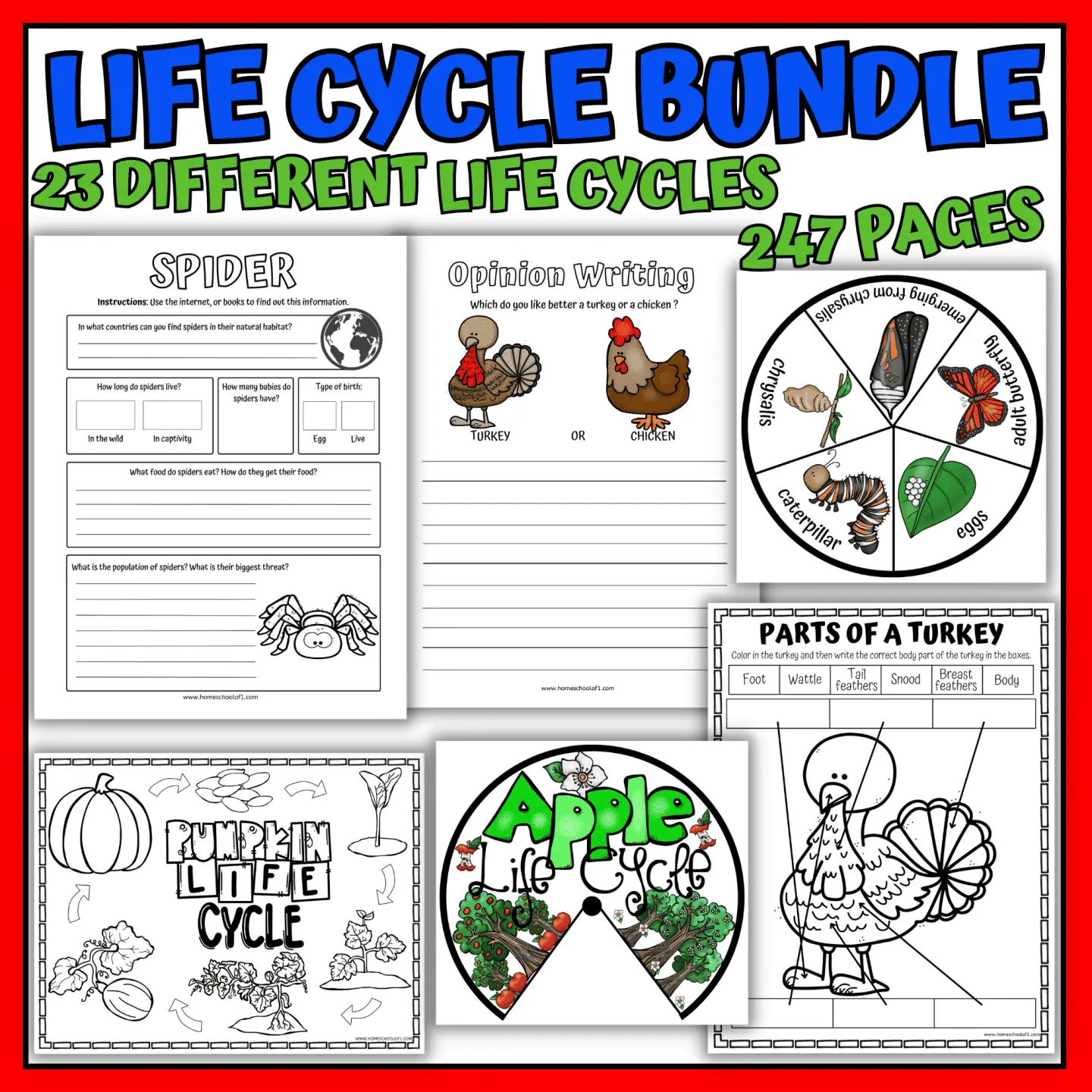Free Life Cycle of a Turkey Worksheet
Our life cycle of a turkey worksheet offers a fun, interactive way for kids to learn about each stage of a turkey’s growth, from egg to adult bird.
These free life cycle worksheets bring each stage to life, making learning both engaging and memorable.
Perfect for a range of ages, they’re a great addition to any lesson, whether you’re homeschooling or need a quick, ready-to-go classroom activity.
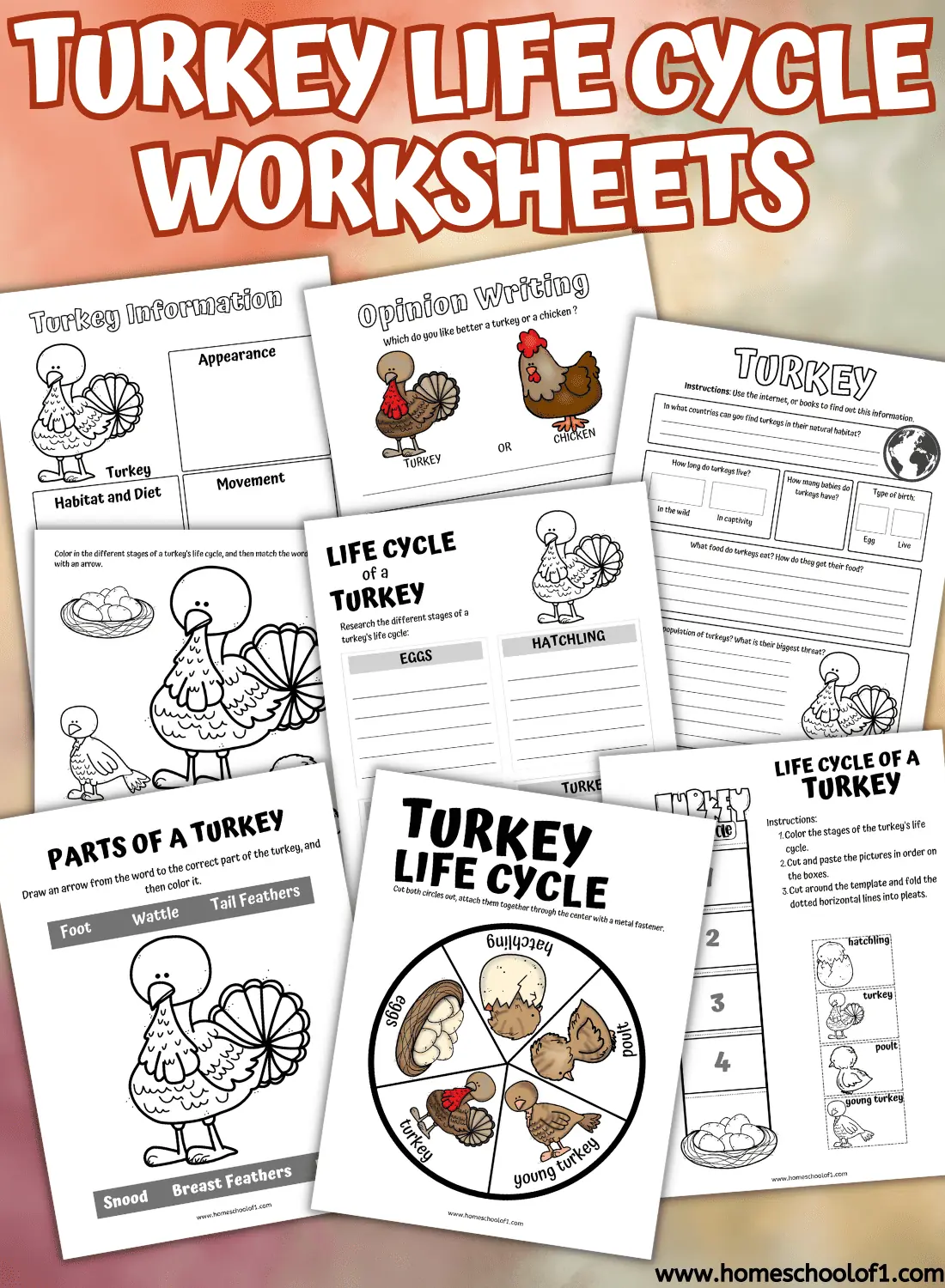
**This post may contain affiliate links. As an Amazon Associate and a participant in other affiliate programs, I earn a commission on qualifying purchases.**
Turkey life cycle worksheet
Kids will love exploring how turkeys grow and change over time with these fun, hands-on printables. And you’ll appreciate that they’re ready to use with just a few basic supplies!
Supplies needed:
- cardstock (printer paper will also work)
- coloring pens
- paper cutter or scissors
- glue
- brass fasteners
What’s inside the download?
This 9-page set includes everything for a complete study, from researching turkey facts to crafting a life cycle spinner:
The first worksheet is a planning sheet where the children have to find out about turkeys. What their appearance is, their habitat and diet, movement, and any interesting facts.
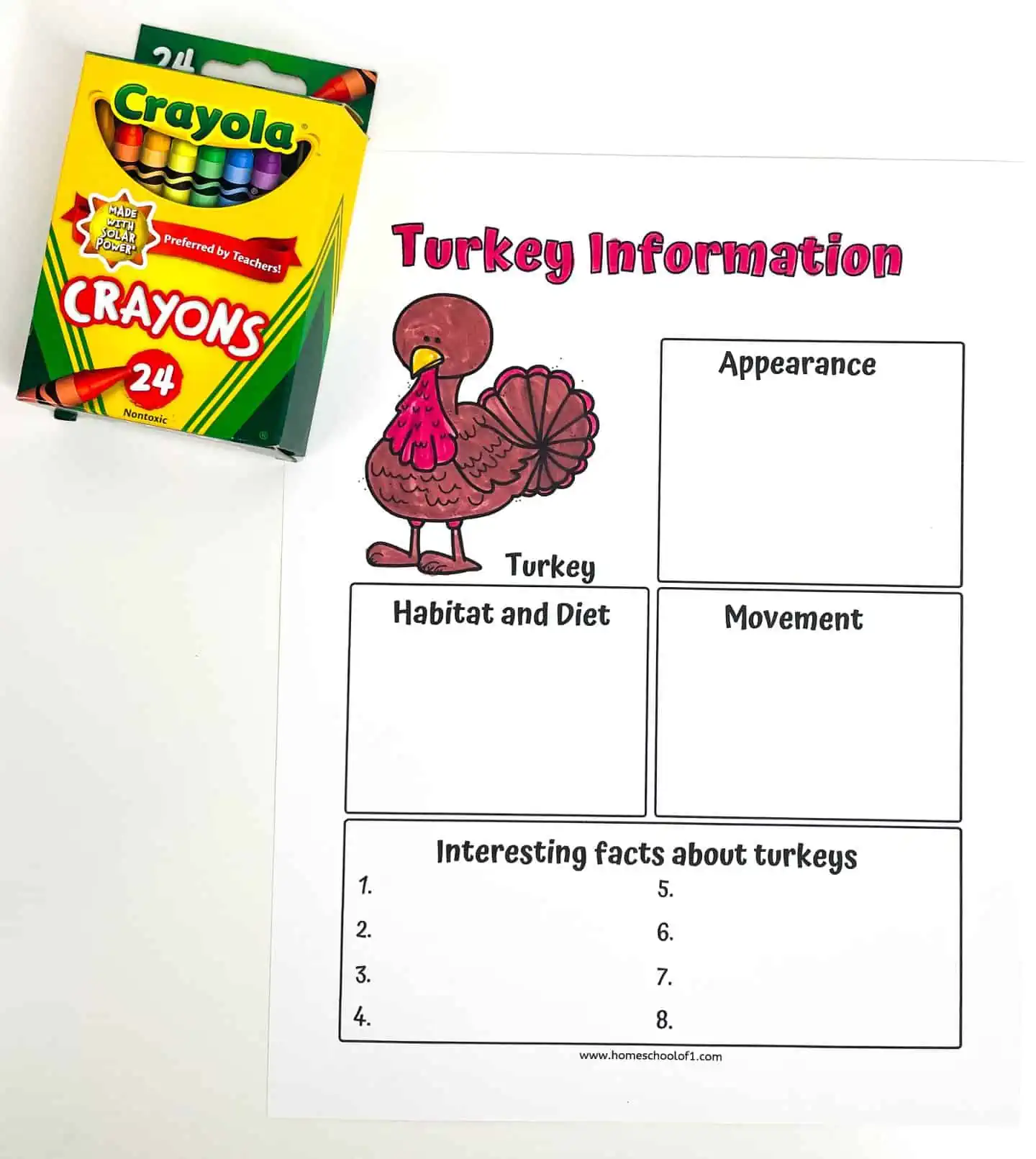
Interesting facts about turkeys
Here are some surprising things you might not know about turkeys:
- Turkeys can actually change the color of their heads! When they’re excited or trying to communicate, their heads shift from blue to red to white. It’s like a mood ring but much more colorful.
- Unlike the plump farm turkeys we think of at Thanksgiving, wild turkeys are excellent fliers. They can zip through the air at speeds of up to 55 miles per hour over short distances.
- Ever noticed the funny bits on a turkey’s face? The wattle (under the chin) and snood (over the beak) might look odd, but they help turkeys express their feelings.
- Although they can fly, turkeys prefer to run and can reach speeds of 20-25 miles per hour—faster than most of us!
- Only male turkeys (toms) make the famous “gobble” sound to attract mates or communicate with other males. Female turkeys, called hens, stick to softer sounds.
- Turkeys have excellent vision, with a nearly 270-degree field of view. This wide-angle sight helps them stay alert to danger.
- Turkeys are more clever than you might expect. They can recognize familiar voices and even remember their names, showing intelligence similar to pets like dogs or cats.
- Turkeys were part of the first Thanksgiving celebration in the United States, although they weren’t the star of the meal like they often are today.
Remember, turkeys are fascinating birds with lots of cool features. If you ever get a chance to observe them up close, you might discover even more amazing things about them!
These are just ideas, let the children come up with their own answers.
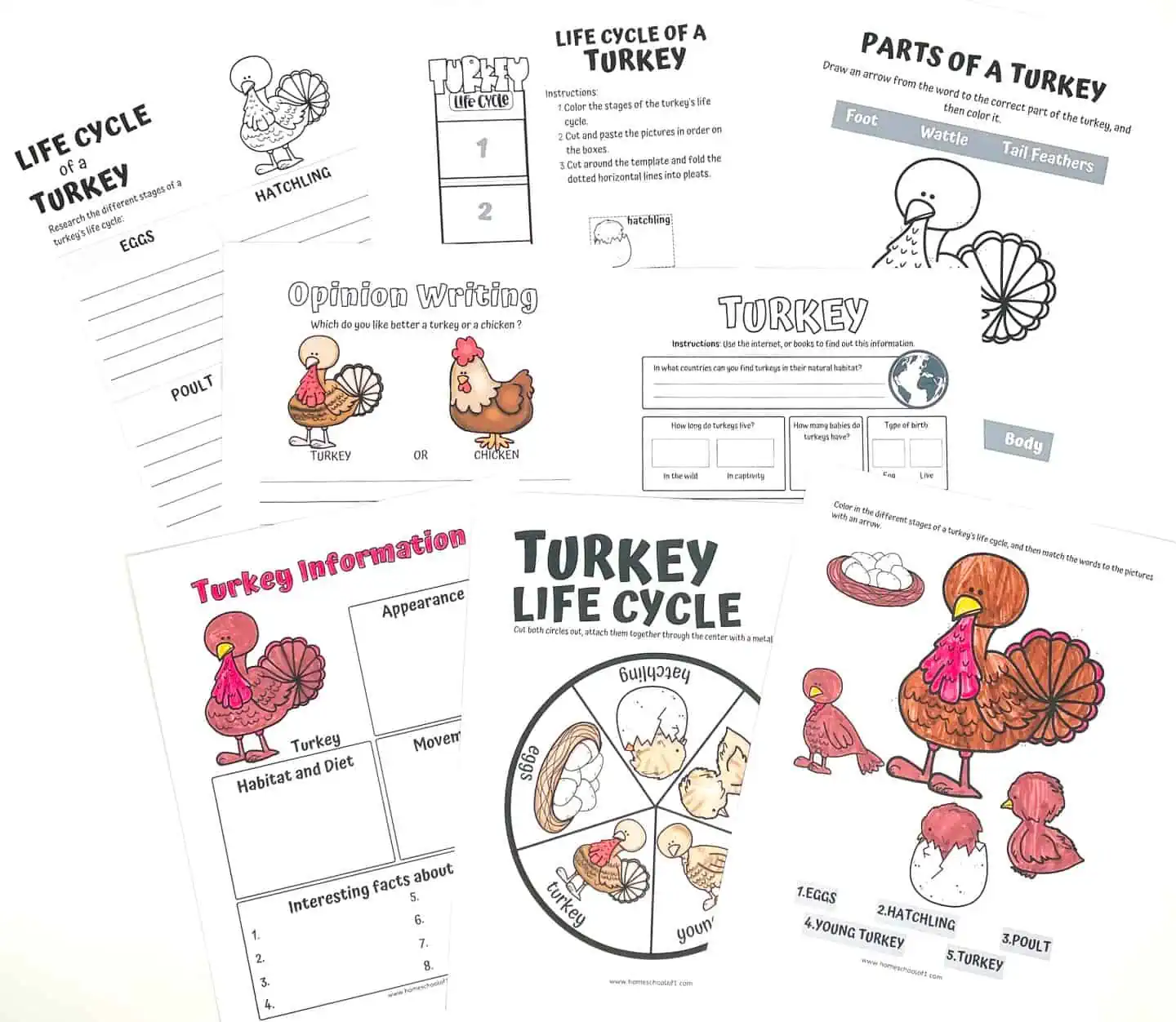
Opinion Writing Prompt: Kids can explore their preferences with questions like “Do you like chickens or turkeys better?” This encourages critical thinking and personal expression.
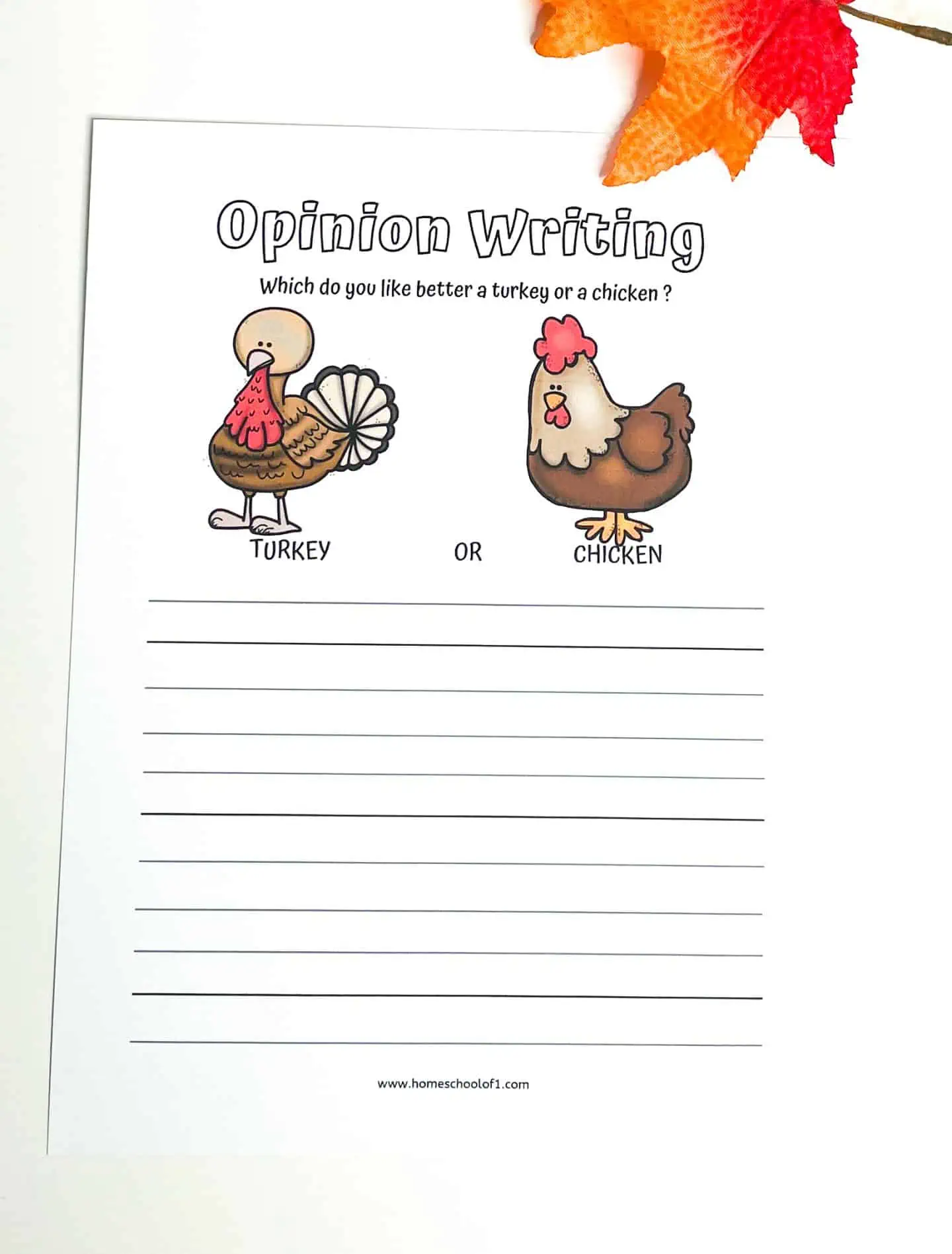
Research Prompts: For further exploration, kids can use books or the internet to find answers to questions like:
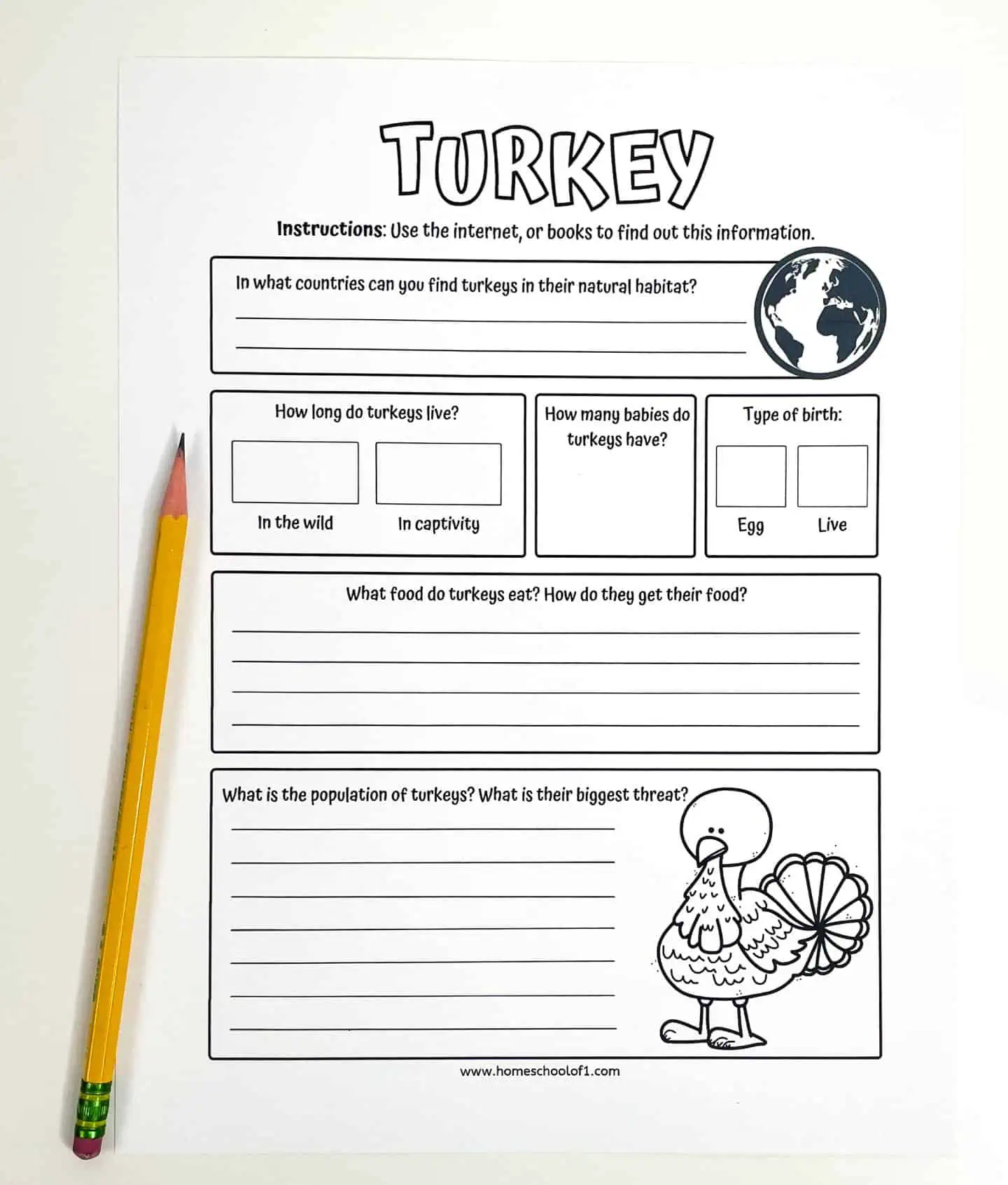
- In what countries can you find turkeys in their natural habitat?
- How long do turkeys live? In the wild, and in captivity
- How many babies do they typically have?
- The type of birth, is it egg or live?
- What food do turkeys eat? How do they get their food?
- What is the population of turkeys? What is their biggest threat?
Life Cycle Exploration: Kids research each life cycle stage of a turkey, then color in the adult turkey.
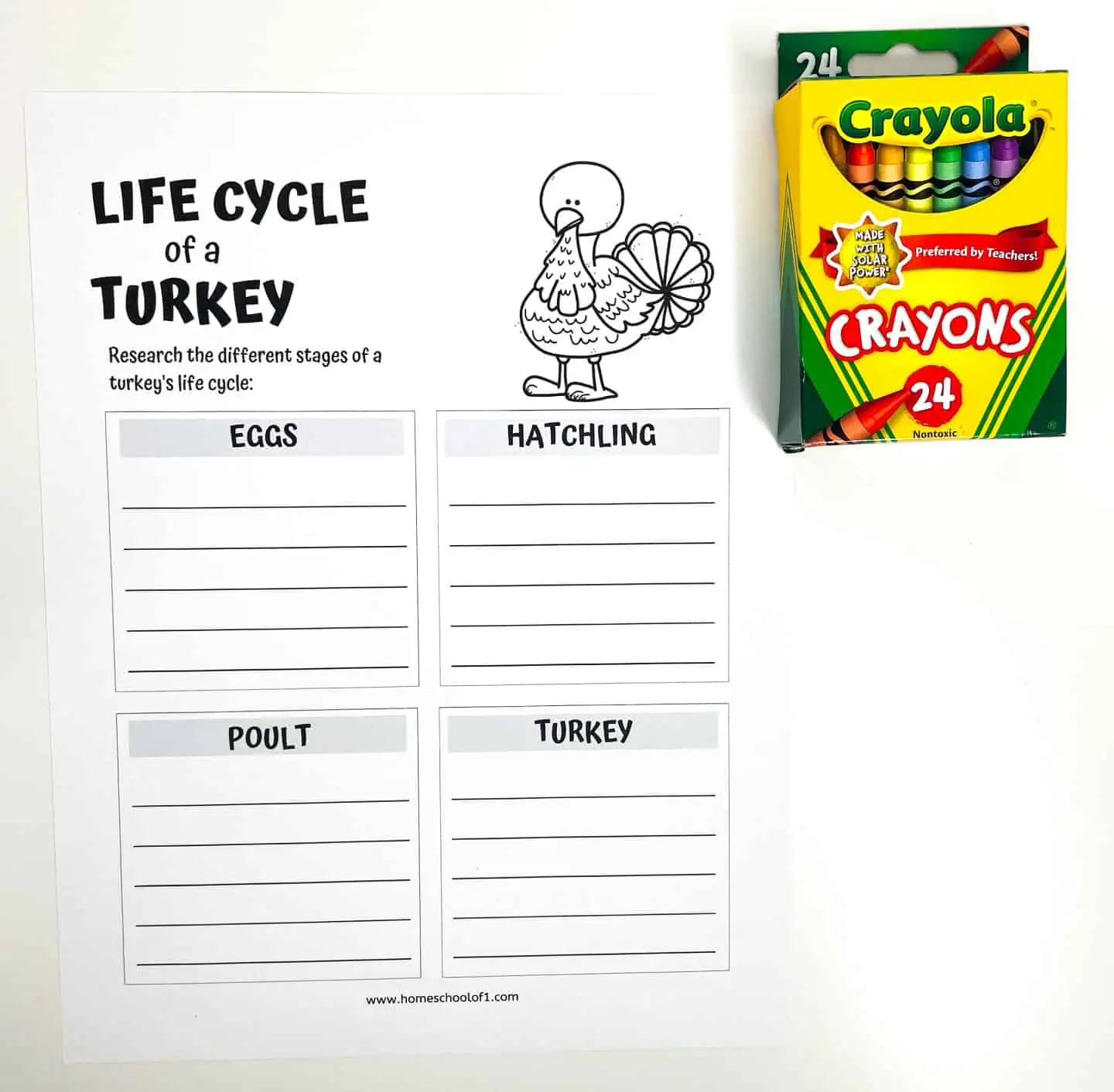
Label the parts of a turkey worksheet, foot, wattle, tail feathers, snood, breast feathers, and body.
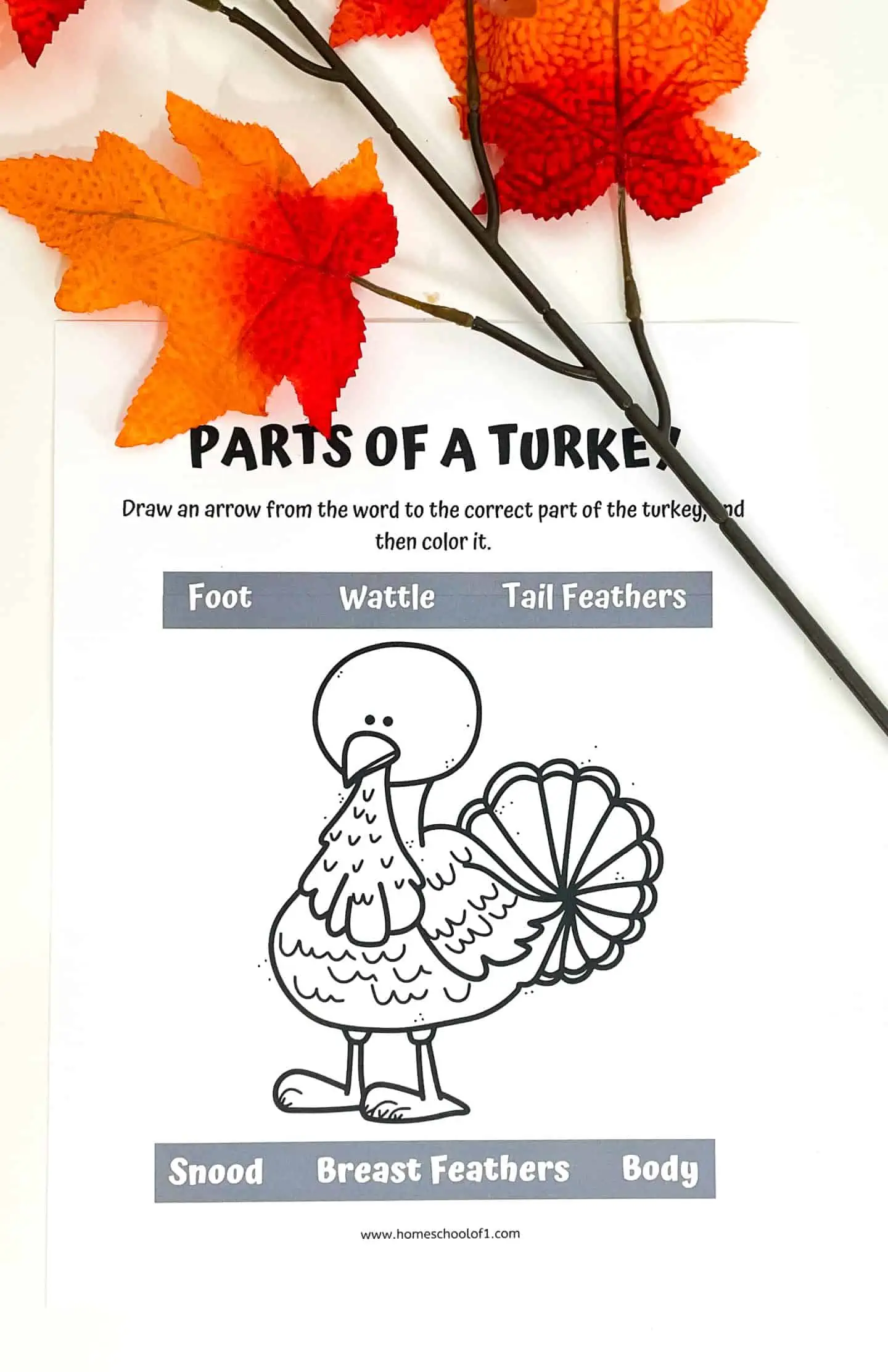
On the next page, the children have to color the different stages of the turkey’s life, and then label which is which.
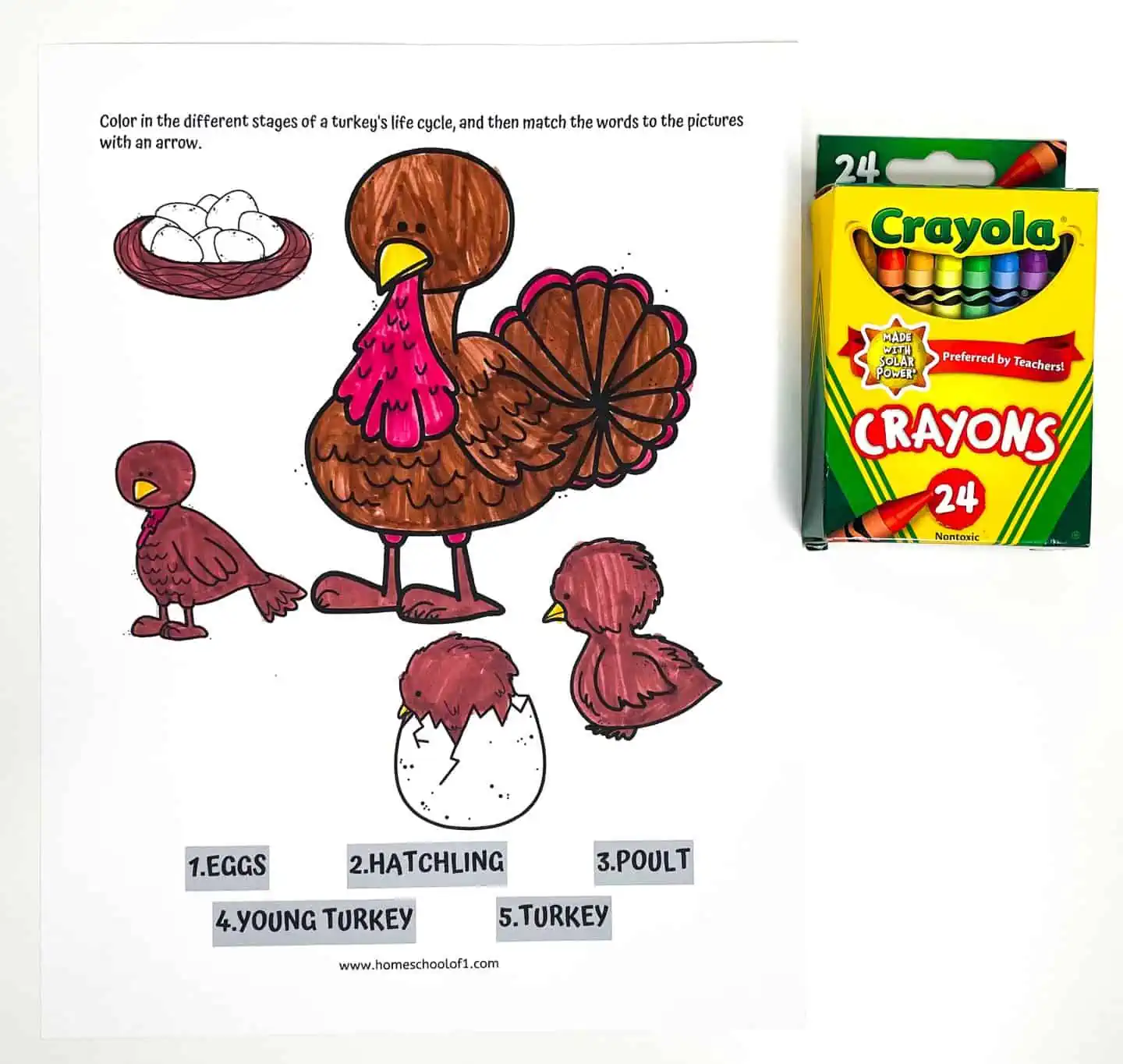
We love to add the Life Cycles book to our studies.
Free turkey life cycle crafts
The first page features a fun turkey craft that includes coloring, folding, cutting, and gluing.
Start by coloring in the images. For younger children, consider cutting the pieces in advance to make assembly easier.
Cut out the turkey growth stages, then help younger kids as needed.
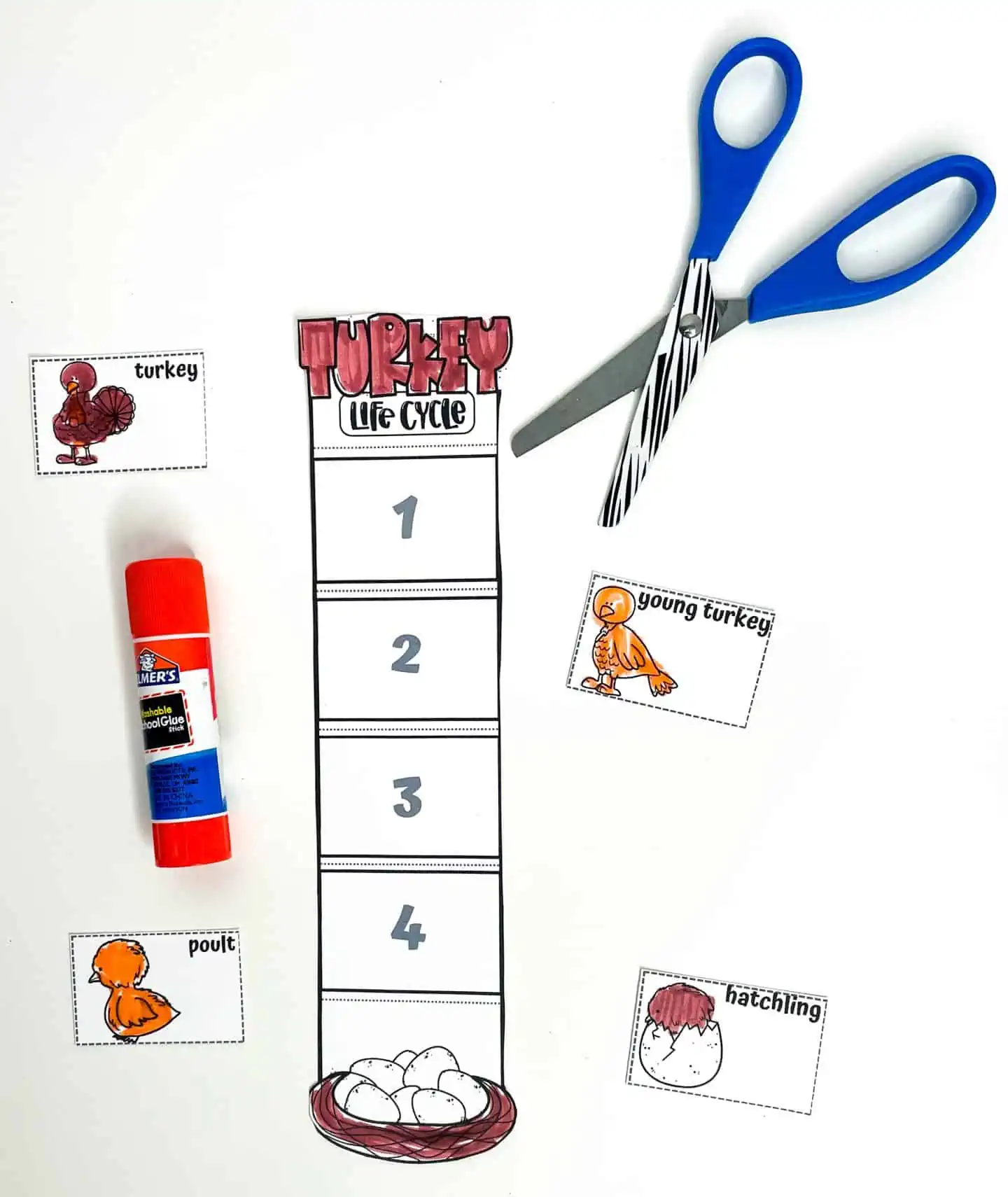
Sort the images in the correct order and glue them under the main turkey image. Once glued, fold along the dotted lines to reveal each stage.

The second craft is a turkey life cycle spinner wheel:
Cut out both circles, making sure to cut out the blank quarter section on the life cycle image.
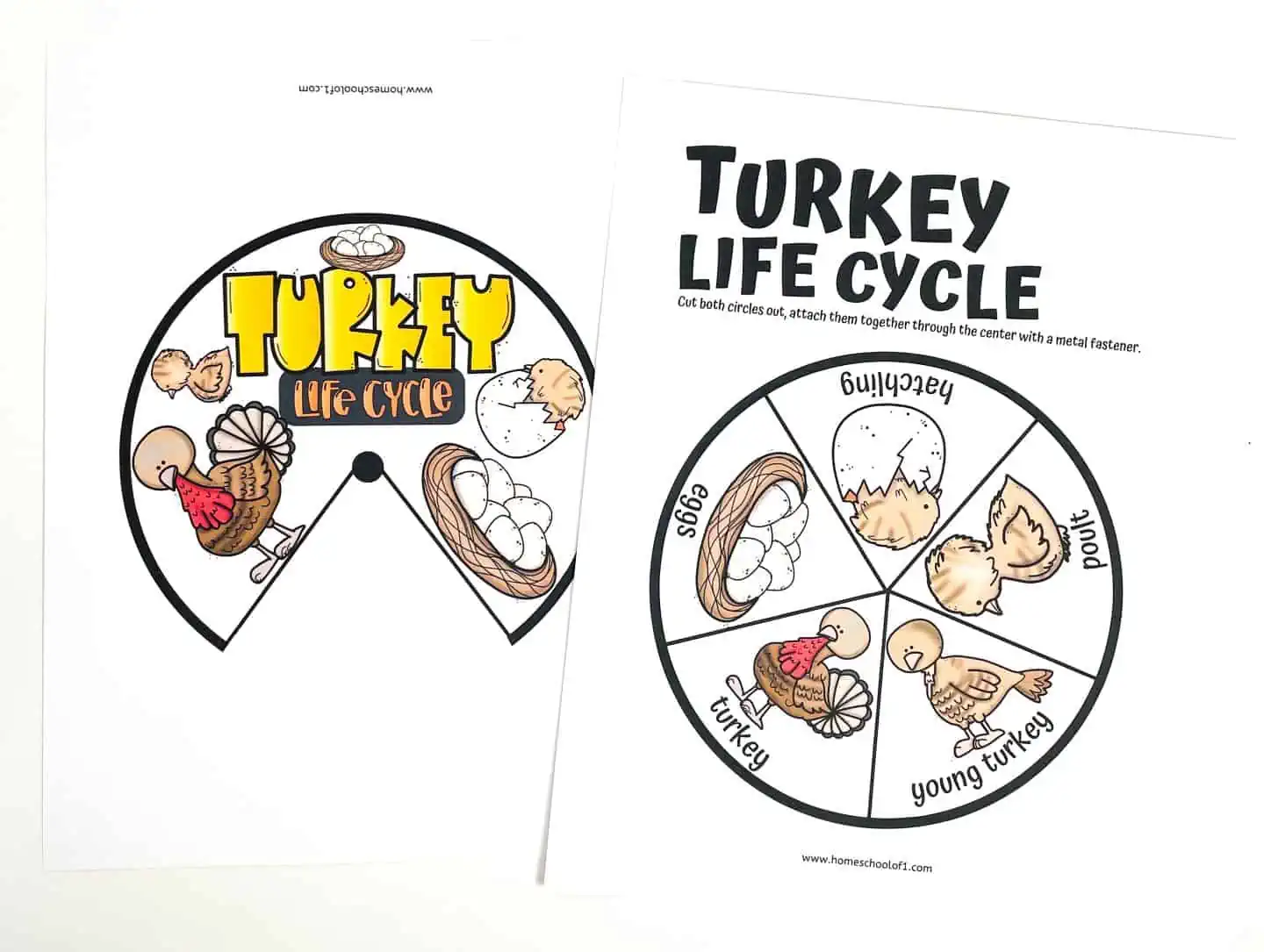
Place the life cycle circle with the quarter cut out on top of the other circle, then attach them in the center with a brass fastener.
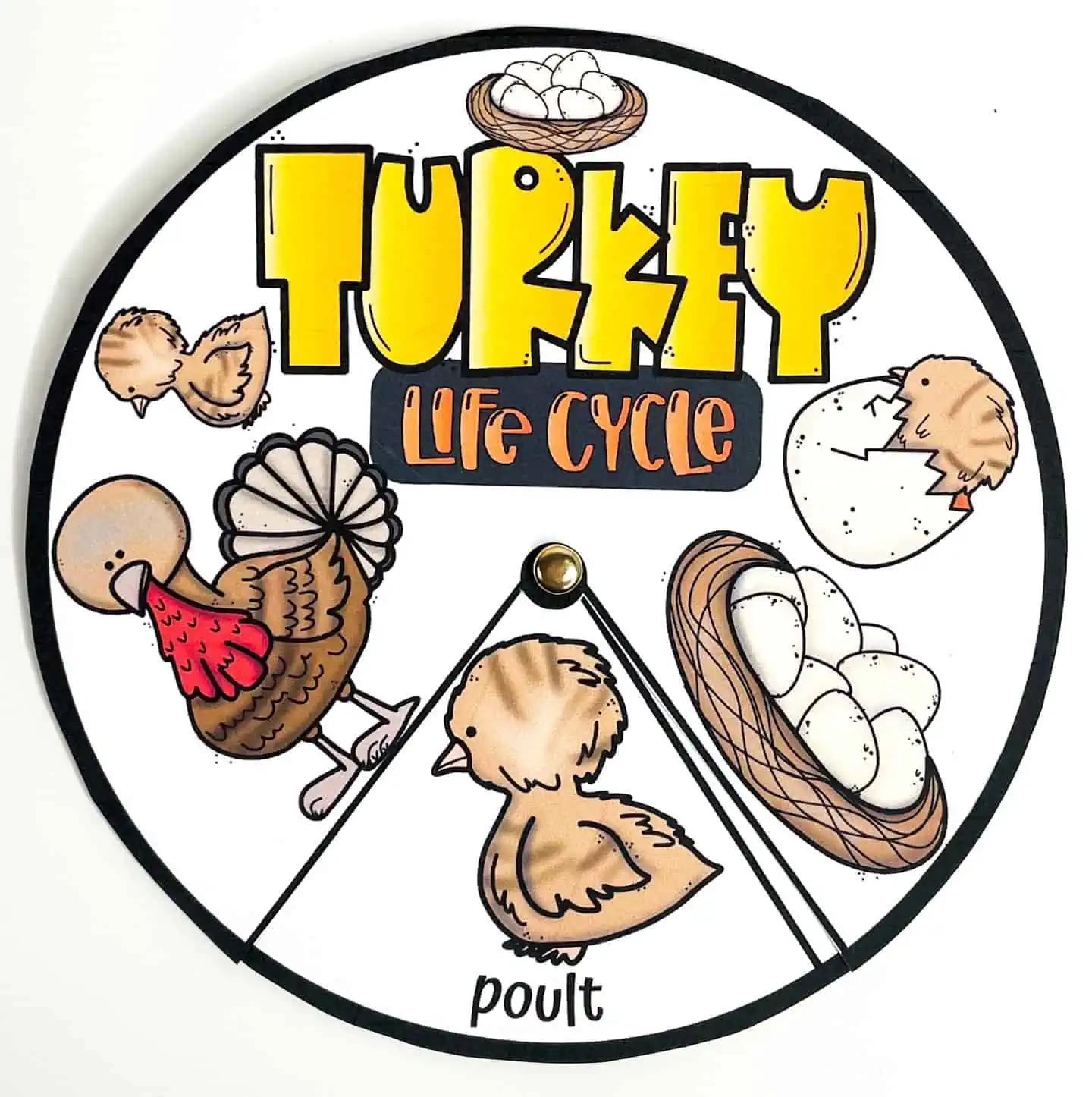
More turkey worksheets
Keep the turkey-themed learning going with these additional activities and worksheets, perfect for adding variety and fun to your lessons!
- Free turkey bingo cards printable: A fun activity to reinforce turkey facts and keep kids engaged with a Thanksgiving twist!
- Turkey scavenger hunt: A lively hunt that encourages kids to explore and learn about turkeys in an interactive way.
- Color by number turkey worksheet: Boost number recognition and fine motor skills as kids color a festive turkey scene by following the numbers.
Best turkey books for kids
Carry on learning about turkeys with our favorite books:
Turkey Trouble! In this hilarious picture book, Turkey is determined to avoid becoming the Thanksgiving main course. Disguising himself as different farm animals, he takes readers on a clever adventure, trying to outsmart the farmer and escape his holiday fate.
How to Catch a Turkey. This imaginative book follows a fun-filled quest to capture a turkey just in time for Thanksgiving. With creative traps, playful rhymes, and vibrant illustrations, it sparks creativity and teamwork, adding a dash of holiday magic.
Need to print later? Add this to your Pinterest board or share it on Facebook. You’ll have it handy whenever you’re ready to use it!
Get the free printable turkey life cycle worksheets here!
Ready to grab your free printable? Just pop your name and email into the form below, and it’s all yours!
Last Updated on 7 January 2025 by Clare Brown

